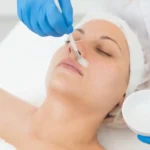THE WHAT Throughout 2020, there was much talk of ‘building back better’ and we expected our post-pandemic world to be a green, eco-friendly utopia. However, as 2021 bought renewed lockdowns and restrictions, has our ‘happy ever after’ transpired? Certainly, sustainable beauty is evolving, new targets have been set and we are asking more. We want products with soul and that comes hand in hand with planet-friendly.
THE DETAILS The real turning point is that more and more companies have recognised that sustainability equals growth and many newly announced strategies prioritize improved environmental performance. “Across our business, we are harnessing sustainability as the ultimate driver of innovation – enabling our brands to capitalize on growing consumer demand for outstanding beauty products that are clean and green,” said Coty CEO Sue Y Nabi on the launch of the US beauty behemoth’s acceleration strategy.
However, creating eco-friendly products is easier said than done; sustainability is one big topic, spanning sourcing raw materials, manufacturing, packaging, transport and even retail and it’s developing daily. This year we saw some real leaps in all areas.
First, in the ingredients sphere, the booming clean beauty movement was redefined to include planet friendly in its scope with Sephora ushering in a new Clean + Planet Positive label to ‘put pressure on the entire industry to do better’ and the water-free camp gained another high-profile brand with the launch of Jennifer Aniston’s beauty line which uses bamboo essence in place of H2O.
Circular and upcycled ingredients have also continued to trend, with Indie brand Full Circle debuting a new ‘rescue’ active and Avon bringing the trend further into the mainstream with its upcycled vanilla fragrance. And in terms of sourcing, both L’Occitane and L’Oréal-owned YSL Beauty dipped their toes into the nature positive program.
Meanwhile, on the packaging front, 2021 marked the year that refill transitioned from niche to normal. We saw several multinationals innovate in the circular, closed loop, zero waste (or waste neutral, even to use the latest buzz word) space. From Colgate-Palmolive’s hand soap tablets and refillable aluminum bottle to Hindustan Unilever’s Smart Fill vending machine, refill is scaling up from corner shop to supermarket. And talking retail, L’Occitane’s Green Store could be set to kick off a trend for sustainable retail.
There’s also been some key developments on the road to recyclable packaging, from Chanel’s sustainable cap for perfume bottles to L’Oréal’s enzymatic plastic bottle. Beiersdorf, meanwhile, unveiled renewable plastic as well as a 100 percent recycled aluminum aerosol can.
In manufacturing, we saw L’Oréal plan a new facility in New Jersey with a solar field and storm water collection system, Unilever team up with the Universities of Liverpool and Oxford to reduce the carbon footprint of personal care products and Procter & Gamble set a net zero target by 2040.
THE WHY Over the course of the last two years, sustainability has become a truly global movement; in 2021, we’ve seen China legislate on plastics, and large Asian multinationals such as AmorePacific and Kao unveil ambitious sustainability agendas.
However, to maintain this level of consumer engagement, the beauty industry needs to help educate and maintain momentum from our collective introspection in 2020 and this year’s COP26 climate summit and help shoppers sift through the reams of information out there so they can make informed purchasing decisions (and there’s nowhere to hide for manufacturers). A scoring system to gauge a given product’s environmental footprint would be a great start – and L’Oréal, Henkel, LVMH, Natura &Co and Unilever are on it. As an added incentive, if we don’t get there first, the legislators will. We’re running out of time.
Aesthetic medicine products are developed and regulated to meet stringent safety and efficacy standards. They are typically administered by trained healthcare professionals such as dermatologists, plastic surgeons, and specialized nurses in clinical settings. These products aim to provide effective solutions for cosmetic enhancement, skin rejuvenation, and overall aesthetic improvement, contributing to both physical appearance and self-confidence.
Key categories of aesthetic medicine products include:
-
Injectables: This category includes products such as dermal fillers, botulinum toxins (e.g., Botox), and collagen stimulators. These injectables are used to smooth wrinkles, add volume, and improve facial contours.
-
Skin Rejuvenation Treatments: Products like chemical peels, microdermabrasion systems, and laser devices are used to improve skin texture, reduce pigmentation irregularities, and enhance overall skin tone.
-
Skincare Products: These include medical-grade cleansers, moisturizers, serums, and topical treatments containing active ingredients like retinoids, antioxidants, and growth factors. They are formulated to address specific skin concerns such as acne, aging, and hyperpigmentation.
-
Hair Restoration Products: Medical treatments and products designed to promote hair growth and treat conditions such as male and female pattern baldness.
-
Body Contouring and Fat Reduction: Devices and products used for non-surgical body sculpting, such as cryolipolysis (cool sculpting) devices and injectable lipolytics.
-
Cosmeceuticals: High-performance skincare products that bridge the gap between cosmetics and pharmaceuticals, often containing potent ingredients with proven clinical benefits.
-
Wound Care and Scar Management: Products like silicone sheets, gels, and advanced wound dressings used to improve healing and reduce the appearance of scars.





